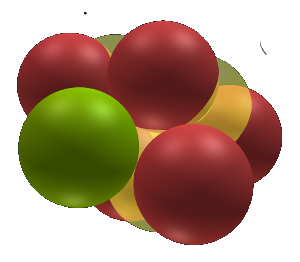The proton is positive and the electron has a negative charge. The electric charge of protons and electrons is considered to be the property which is provided from the beginning. However, the plus and minus charges are inversely proportional to the square of the distance. As approaching, the electric attraction of protons and electrons becomes stronger.
If this is correct, protons and electrons should definitely collide. Since the electric attraction becomes the strongest state, it combines. Solar wind is a plasma in which protons and electrons are mixed. Before solar wind comes to earth, protons and electrons should combine into neutrons. However, in the solar wind, neutrons are only observed rarely. There are many protonated hydrogen composed of 3 protons and 2 electrons in solar wind.
Protons and electrons do not stick together under normal conditions. Under what conditions do protons and electrons combine? Neutron can be formed by cold fusion. When electric discharge or ultrasonic vibration is applied, neutrons are generated. As pointed out in oscillating nuclei, nuclei emit gamma rays in the excited state. Even a single proton may emit gamma rays.
The power that protons and electrons attract is Coulomb force. The energy of the electric field of each should produce coulomb force. In the macroscopic system, when plus and minus charges approach, discharge occurs. If it sticks perfectly, since the potential difference disappears, the Coulomb force also disappears. Since protons and electrons are elementary charges, will the potential difference be kept even if they stick together? If it is the same as the macroscopic system, as the protons and the electrons approaches, the potential difference is resolved. An electromagnetic wave is radiated. The closer you get closer, the lower the Coulomb force goes and the zero Coulomb force will be zero.
In order for protons and electrons to combine, energy for coupling should be needed. Is not it a neutrino? An electron approaching a proton undergoes neutrino radiation and when excited it can bind to protons.
Also, when a proton receives a neutrino, the charge of the proton fluctuates, and the electric field is radiated. The standing wave of the electric field creates a valley of the electric field which hinders the approach of electrons.
Conclusion , when the protons and electrons approach, the potential decreases and the Coulomb force loses. When an electron receives a neutrino and becomes excited, it can bind with protons, so that it becomes a neutron. Normally, protons are larger, so they are more susceptible to neutrino radiation. When excited by neutrinos, the charge of the protons increases, so that the electric field slightly increases and oscillates the electric field. A standing wave (gamma ray) of the electric field is created around the proton. Electrons fall in the valleys of the potential of the standing wave, avoiding collision with protons. (This standing wave also creates an electron orbit.) For these three reasons, protons and electrons do not collide.
In order to control the distance between protons and electrons, electromagnetic waves such as neutrinos and gamma rays can be used. This should also be used for cold fusion technology.
- Log in to post comments
